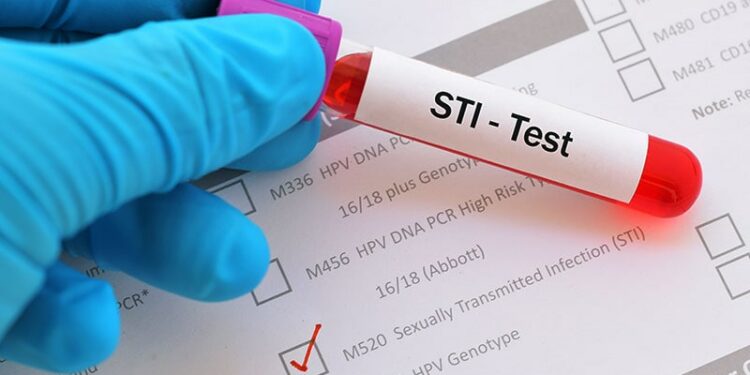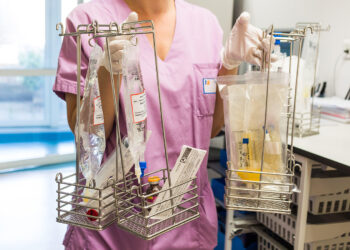[ad_1]
The self-collection of sexually transmitted infection (STI) tests circumvents barriers that deter adolescents and young adults (AYAs) from seeking clinic-based reproductive healthcare, a text-based national survey suggested.

“The autonomy and confidentiality offered by self-collection may empower AYAs to take charge of their sexual health without fear of judgment or social stigma,” wrote researchers led by Okeoma O. Mmeje, MD, MPH, an associate professor of obstetrics and gynecology at University of Michigan Medical School, Ann Arbor, Michigan.
The MyVoice by Data Diggers survey revealed that of 764 respondents, 695 (91.1%) would use free STI self-collection kits based on a urine sample or vaginal swab. Those who would not use such a kit (5.9%) cited concerns about test accuracy and discomfort with specimen collection.
The authors said the survey results, which included candid personal comments from participants, provided “nuanced insights into the unique sexual health needs and preferences of adolescents and young adults,” and its highlighting of attitudes and experiences offers policymakers valuable information at a time of rising STI rates. “Year after year, there has been an increase in STIs, and approximately 50% of new cases in the United States occur in adolescents and young adults ages 15-24 years,” Mmeje told Medscape Medical News.
According to Centers for Disease Control and Prevention surveillance data, more than 2.5 million US cases of syphilis, gonorrhea, and chlamydia were reported in 2022. These included an estimated 1.6 million cases of Chlamydia trachomatis infection in 2021 and 2022, a rise from 1.5 million in 2020. Neisseria gonorrhea infection also increased from 677,000 cases in 2020 to 710,000 in 2021, disproportionately affecting AYAs.
The Sample
In the MyVoice poll, 91.8% responded to at least one survey-specific question and all demographic questions. Among respondents, 44.8% identified as men, 42.8% as women, 6.2% as nonbinary, and 4.2% as transgender. Most participants were White individuals (64.1%), non-Hispanic/Latin ethnicity individuals (86.9%), and 53.5% fell into the 20-24 years age bracket, with 67.5% having completed high school or more.
Among the findings:
• Convenience and privacy were paramount, with respondents largely preferring self-collection over in-person testing: 69.5%.
• About 91.1% would use free STI self-collection kits.
• About 80.2% said they would like to receive their self-collection kit at home by mail because of convenience and privacy, whereas 38.8% would prefer to pick it up from a pharmacy (45.5%), clinician’s office (25.5%), or school (5.5%).
• Other participants, however, reported concerns about correctly administering the home test, accuracy of the results, and again privacy issues including mail delivery, using the kit at home, and discreet disposal of the kit supplies.
Comments from the Survey
“Yes! Sounds like a great idea and removes like 95% of the barriers to getting tested.” (Woman; 24 years; White, non-Hispanic individual)
“Maybe, depending on if I had to mail the sample in and wait. If I could do the test all by myself at once, I definitely would use the test.” (Woman, 20 years, White, non-Hispanic individual)
“Part of me prefers to be tested at home because I don’t like going to doctors…But I also wonder if the at-home tests would be just as accurate as the in-person test done at a doctor’s office? Also, say you do test positive for an STI, now you would have to seek out a doctor to get treatment, so either way you’re still seeing doctors.” (Woman; 22 years; White, non-Hispanic individual)
“I would be concerned about not being able to relax or not swabbing the right area. An instructional video would help, though.” (Nonbinary; 19 years; White, non-Hispanic individual)
Another concern was that a family member might discover a test mailed to the home.
“Some people may have intrusive parents or lack or privacy.” (Man; 19 years; White, non-Hispanic individual)
The responses suggested that a social media campaign targeting AYAs may increase the use of STI self-collection kits, the authors said, by disseminating accurate information, reducing stigma, and providing accessible resources for sexual health.
“Increased awareness and availability of STI self-testing kits, especially with healthcare providers offering them, will help alleviate concerns about using them,” Mmeje said.
As for cost-effectiveness, she added, self-testing aims to improve screening for AYAs in places where they can easily access care. “With time, it is my expectation that health plans will include self-collected STI test kits as a covered benefit, and/or school-based health centers and local public health departments will have them available free of cost.”

Commenting on the survey but not involved in it, Rula V. Kanj, MD, FACOG, director of Pediatric and Adolescent Gynecology at Northwell Health in New Hyde Park, New York, sees increasing availability of self-collection kits as an excellent way to decrease barriers to testing. “Young people may have limited access to transportation, or may feel self-conscious about interacting with healthcare providers, especially if youth are from historically marginalized groups,” she told Medscape Medical News. “Many young people want to protect their reproductive health, and in this survey, most indicated that they would feel comfortable collecting a specimen at home, provided they had clear instructions.”
Having self-collection kits mailed to young people’s homes may be the best option overall, in her view, for both convenience and confidentiality. “This may still pose privacy concerns for youth who live with parents or guardians — so these kits would ideally also be available for pick-up at local businesses or schools,” she said.
The cost-effectiveness of such kits, however, needs to be evaluated from an individual and a population perspective. “At a population level, increased STI testing would ideally reduce the transmission rates of STIs, as well as reduce the impact of untreated STIs,” she said. “But earlier detection is just one component of STI care. Young people with a positive STI result need to then be able to access treatment, and they may have to again deal with similar barriers.”
This project was funded in part by the University of Michigan’s Office of the Provost. The authors disclosed no competing interests. Kanj disclosed no relevant competing interests.
Diana Swift is an independent medical journalist based in Toronto, Ontario, Canada.
[ad_2]
Source link : https://www.medscape.com/viewarticle/survey-shows-youth-acceptance-sti-self-collection-tests-2025a100048y?src=rss
Author :
Publish date : 2025-02-19 07:01:43
Copyright for syndicated content belongs to the linked Source.














